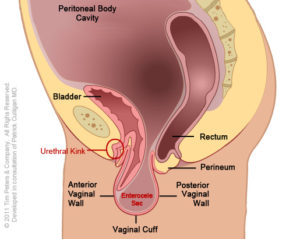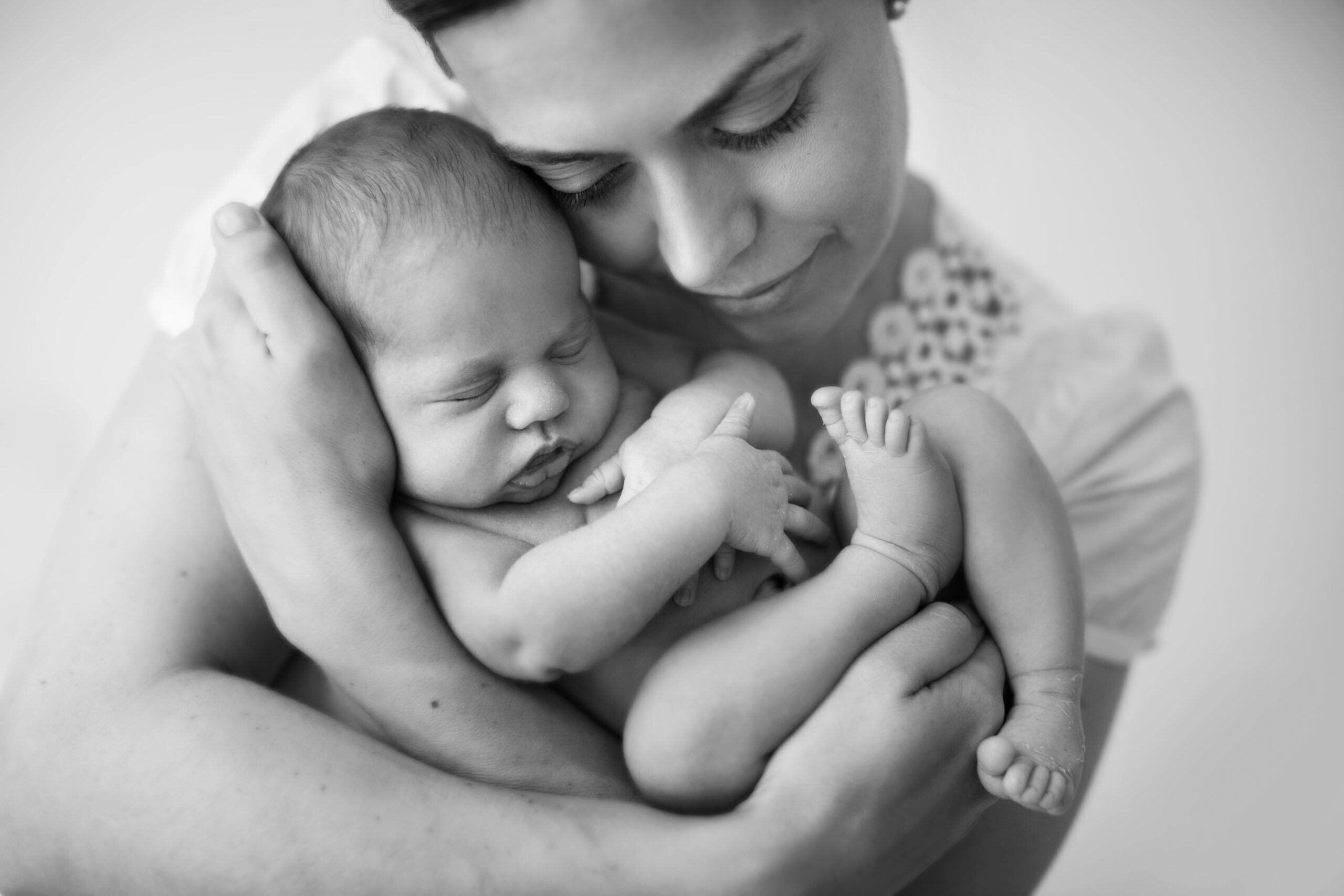
Have you heard about POP ? This stands for Pelvic Organ Prolapse. POP occurs when the muscles fascia and ligaments holding your pelvic organs, including your bladder, uterus and bowel are weakened and stretched. When this happens the the pelvic organs drop. You then have a Prolapse and this can be a bladder, bowel, uterus prolapse or a mix of them.
The Risk of Prolapse Post Birth
50% of postpartum women are likely to have some kind of POP at some point in their lives. There are also a number of risk factors for POP which includes prolonged labor, instrumental / forceps delivery of the baby, episiotomy, chronic constipation, hysterectomy and advancing age.
Many women who experience prolapse often don’t realise it, or others notice a drop or something not feeling quite right down there. POP is common and it does NOT just happen to post menopausal women.
If something doesn’t feel right or your are not comfortable performing an exercise in they gym or with a trainer please see a Women’s Health Physiotherapist. If a POP found in its early stages specialised exercises can help restore a prolapse and in many cases surgery can be avoided.
The organs which you will commonly hear about in postpartum prolapse cases are :
- A Bladder POP which is called Cystocele.
- Rectum POP called Rectocele.
- Uterus POP called Uterine prolapse.
It is difficult to personally determine the level of your prolapse so it is essential to have an internal assessment performed by a Women’s Health Physio or Medical Professional.
Symptoms of a Prolapse
- A bulging feeling at the entrance of the vagina or rectum.
- A sensation of a lump coming down in the vagina or rectum.
- Heaviness within the vagina / rectum particularly towards the end of the day
- Constipation or incomplete bowel emptying needing to manually assist bowel empty
- Bladder problems including slow flow and incomplete emptying
- Chronic bladder infection
- Discomfort with sexual intercourse
- Difficulty inserting tampons
- Ongoing low back pain.

Vaginal Prolapse Image
Below are some of the risk factors that can increase the chances of a prolapse :
Weak Pelvic Floor
A prolapse is due to weak pelvic tissues and pelvic floor muscles. Functional exercises that focus on your pelvic floor, before during and after pregnancy can help to prevent a prolapse. Your pelvic floor is the foundation of your core and your pelvic floor muscles are located in your pelvis, these muscles stretch like a hammock from the pubic bone (at the front) to the coccyx or tail-bone (at the back) and from side to side. Think of the foundation of a house or building – without a strong stable base it collapses. That’s right, without a stable pelvic floor the rest of the core and other internal organs collapse !
During pregnancy, your body produces a hormone called relaxin. This hormone softens the ligaments in the body and the fascia in the pelvic floor. It results in the increased weight of your growing baby further weakens the pelvic floor muscles. Please see a Certified Pregnancy Trainer so you can learn safe and effective exercises that help to protect and tone your pelvic floor.
Vaginal Birth – especially a medically assisted birth
The muscles and ligaments in your pelvis and vagina also stretch during pregnancy to accommodate your baby and to also assist with the birth process. If forceps or a vacuum is used during birth this can further stretch and weaken your pelvic floor muscles. Post birth, it’s normal for your pelvic floor muscles to feel weak. Just like any other muscle in your body your pelvic floor needs rehabilitation and recovery time. To ensure this process is effective please see a Women’s Health Physio or Certified Post Natal trainer so you can safely and effectively learn how to do this.
Family History
Genetics do play a part in increasing your risk of POP. If someone in your family, like your mother or grandmother, experienced prolapse after birth, the chances are you are more likely to as well. If you do have a family history of prolapse make sure that your pelvic floor muscles are given the correct attention before pregnancy and after birth to avoid or reduce the severity or occurrence of a prolapse.

Too much too soon after Birth
In today’s society women are expected to be on their feet and back into normal life pretty quickly after birth. Keep in mind that after nine months of pregnancy and going through labour or a c-section, your body needs to at least 12 months to heal and recover effectively. If you are breastfeeding, the hormone relaxin will also be in your system longer which again will soften all your ligaments including your pelvic floor.
Walking and being on your feet for prolonged periods of time post birth means your pelvic floor has the pressure of your organs bearing down while they are weak and tired. This can increase your risk of a prolapse. It is recommended that postpartum women take the first six to eight weeks to rest and focus on healing following the birth of their baby. During this period please don’t feel pressured to jump back into exercise too soon – your body needs time to heal from the inside out. Read more returning to exercise post birth here.
I have had many clients young and old who have experienced a prolapse. Unfortunately several POP’s have been triggered by jumping back into exercise to early and participating in exercises that are not safe post birth.
Sadly there are many exercise professionals who are not aware of prolapse risks are hurting women with exercise – read more here . High intensity exercises that causes too much intra-abdominal pressure including box jumps, star jumps, burpees, planking, sit ups, kettlebell swings and sprints are too be avoided during the postpartum period. As well using very heavy weights and holding your breath when you lift. Please also don’t think that just because you were fit and strong pre-baby that you can bounce back into exercise sooner – Fitness Professionals have prolapse’s too.
Can you exercise with a POP ?
Yes you can ! However I don’t recommend doing any of the exercises mentioned above immediately. Please see a Women’s Health Physio so they can assess you and provide you with a recovery plan. What exercises you can and can’t do will depend on many factors including stage of your prolapse, how many weeks post birth you are and what kind of prolapse you have had. I have seen many women who have been consistent with their recovery program, and with the assistance of both a physio and certified post natal trainer who can now squat, jump and run !
It is important to remember recovery and prevention of a prolapse is not just about the exercises you do in the gym. Your daily postural alignment and breath is a key focus, as well as how you move in your day to day life. This includes carrying heavy grocery bags, picking up toddlers, pushing prams and getting in and out of cars. If your body is out of alignment it can put your pelvic floor in a very vulnerable position and contribute to pelvic floor dysfunction and a prolapse. That is why in all my sessions we focus on functional training – this means training your body to function correctly in daily life.
Most importantly during and after pregnancy always trust your body and if it doesn’t feel right don’t do it !
See a Certified Pre / Post Natal Trainer
I would love to help you, why not join a session today.
xx Dahlas

About Dahlas
Dahlas Fletcher is one of Australia’s most respected and successful certified and experienced Pregnancy and Female Fitness Trainers. Her goal is to help you be the happiest, most fabulous version of yourself, inside and out.


